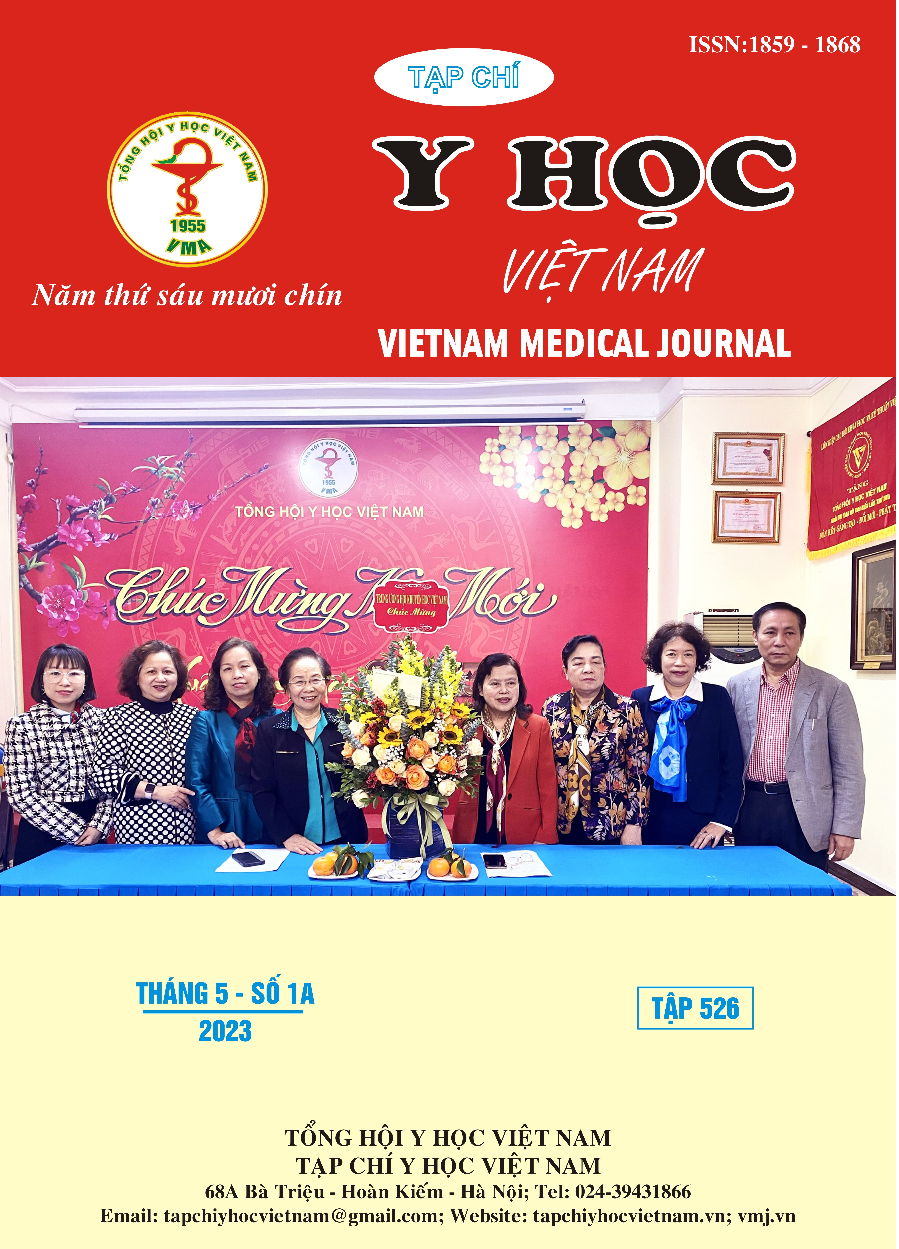ASSESSMENT OF CHANGES OF HEMODRATED, ADVERSE EFFECTS OF INTRAVENOUS ANESTHESIA WITH AND WITHOUT TARGET CONTROLLED INFUSION PROPOFOL FOR UROLOGICAL PROCEDURES AT THE HANOI HIGH AND DIGESTIVE CENTER
Main Article Content
Abstract
Intravenous anesthesia with propofol TCI together with LMA ventilation has many advantages compared to propofol without TCI. It can apply to medium and short urological procedures for outpatients, with pretty high efficiency. Randomized controlled clinical trials. At the Hanoi High Tech and Digestive Center, Saint Paul General Hospital from February 2021 to October 2021, 120 ASA I/II patients are selected to undergo ambulatory urological procedure, then randomly divided into 2 groups. Group 1 in (60 patients) were received intravenous anesthesia with target controlled infusion (TCI) propofol. Group II (60 patients) were received propofol through electric syringe pump. According to our research: The mean reduction in heart rate of the 2 groups was 24.2±9.6% and 26.4±9.8% in the order TCI/BDR. The number of cases of lowering blood pressure and the number of cases requiring ephedrine to raise blood pressure were significantly higher in the DR group than in the TCI group: 30 cases (50%) compared with 18 cases (30%) and 23 cases (38.3%) ) compared with 12 cases (20%). The sedation score when returning to the recovery room in the control group was higher than the target concentration control group: 4.5 ± 0.7 points compared to 4.2 ± 0.6 points (p<0.05). There was no difference in adverse events and postoperative complications between the 2 study groups.
Article Details
Keywords
Intravenous anesthesia, target controlled infusion, anesthesia for outpatient, urological.
References
2. Hoàng Văn Bách, Nguyễn Quốc Kính, Công Quyết Thắng. Khởi mê tĩnh mạch bằng kỹ thuật propofol - TCI kết hơp theo dõi độ mê bằng Entropy. Tạp chí y học thực hành, 2011;744, 11-13.
3. Nguyễn Quốc Khánh. Bước đầu so sánh gây mê tĩnh mạch hoàn toàn bằng propofol có hay không kiểm soát theo nồng độ đích. Tài liệu hội thảo sinh hoạt khoa học chuyên đề TCI trong gây mê hồi sức thế kỷ 21. Hà Nội. Tháng 5/2009.
4. Vũ Hoàng Phương. Ứng dụng TCI trong gây mê ngoài phòng mổ. Tài liệu hội thảo ứng dụng gây mê có kiểm soát nồng độ đích (TCI) trong thực hành lâm sàng. Hà Nội. Tháng 9/2011.
5. Gale T, Leslie K, Kluger M. Propofol anaesthesia via targetcontrolled infusion or manually controlled infusion: effects on the bispectral index as a measure of anaesthetic depth. Anaesth Intensive Care. Dec; 2001; 29 (6):579-84.
6. Guignard B, Dhonneur G, Kirov K, Waileck P, Margenet A, Duvaldestin P. Propofol- Alfentanil versus Propofol: effect on the awakening and the recovery of the swallowing reflex after general anesthesia for colonscopy. Agents and techniques of anesthesia; 1995;37: 6.
7. Nguyễn Văn Chừng. Sử dụng lâm sàng thuốc gây mê hồi sức. Nhà xuất bản Y học, 2004; 104-106.
8. Evans J.M., Davies W.L. Monitoring anaesthesia, Clin Anesth, 1984;2, 243 – 262.


